Pallet Inverter: How to Rotate Pallets Loaded with Hazardous Cleaners?
Handling pallets of hazardous materials like industrial cleaners presents a serious challenge. You know the risks. A single mistake during manual transfer can lead to dangerous spills, employee injuries, and costly production shutdowns. You might have considered a pallet inverter, but using a standard machine on volatile chemicals feels like a gamble you can't afford to take. This situation puts your operation, your people, and your bottom line in a vulnerable position.
The safest way to rotate pallets loaded with hazardous cleaners is to use a specialized pallet inverter designed with specific safety features. These machines utilize gentle, adjustable clamping pressure to avoid crushing containers, a fully enclosed rotation chamber to contain any potential leaks, integrated spill containment trays, and controlled rotation speeds to prevent sloshing and instability of the liquid.
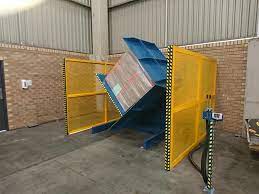
As an engineer who has spent his entire career in the packaging and material handling industry, I've seen firsthand how the right equipment can transform an operation from risky and inefficient to safe and streamlined. The question isn't just how to rotate these pallets, but how to do it in a way that protects your investment and your team. Let's dive deeper into the specifics, because the details are what separate a potential disaster from a smooth, reliable process.
Why is a standard pallet inverter a risk for hazardous materials?
You might be looking at your budget and thinking a standard pallet inverter is a cost-effective solution. The problem is, this approach overlooks the hidden costs of a potential failure. Using a machine that isn't built for the unique demands of hazardous materials can create new, more severe problems. You risk equipment damage, product loss, and, most importantly, a serious safety incident that could have been easily avoided.
A standard pallet inverter is a significant risk for hazardous materials because it typically uses high, non-adjustable clamping pressure that can rupture or damage the containers. Furthermore, it lacks the essential sealed chamber and spill containment systems needed to manage a leak if one occurs during the 180-degree rotation cycle.
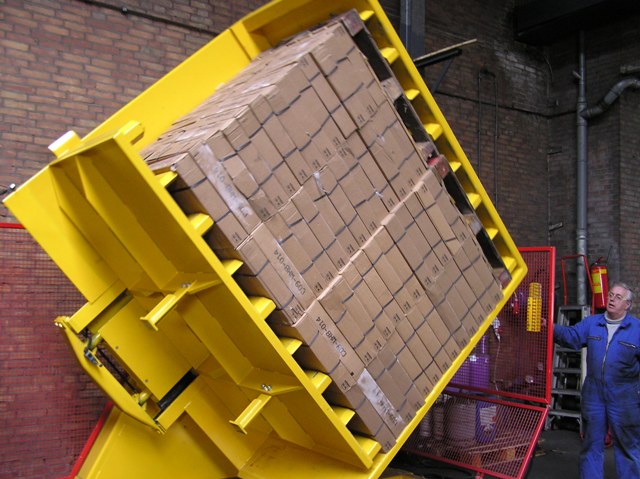
In my years of designing and building these machines, I've learned that "good enough" is never good enough when safety is on the line. A leader like Javier Morales, running a massive steel operation, understands that using the wrong tool for a critical task is a recipe for failure. The same principle applies here, even if the scale is different. Let's break down the specific failure points of a standard machine when handling hazardous cleaners.
The Dangers of Uncontrolled Force and Speed
A standard pallet inverter is usually designed for robust goods like bags of cement or boxes of finished parts. Its primary goal is speed and power, not delicacy. This creates two major risks for chemical containers.
- Excessive Clamping Pressure: Most standard inverters use a powerful hydraulic system to secure the load. This pressure is often set to a single high level to handle the heaviest possible pallet. When you place a load of plastic drums or totes filled with liquid cleaners into this machine, that force can easily crush, crack, or deform the containers. Even a small breach can lead to a significant spill.
- Aggressive Rotation Speed: These machines are built for efficiency, which often means a fast rotation cycle. For a liquid load, a rapid 180-degree flip can cause a violent sloshing effect. This internal movement creates immense pressure on the container seals and walls, increasing the likelihood of a leak. It also makes the load unstable, which can be a safety hazard in itself.
The Lack of Essential Containment
The most critical flaw of a standard inverter in this application is its open design. It's built to hold a load, not to contain it.
- No Spill Management: If a container leaks during rotation in a standard machine, the hazardous liquid will pour directly onto the machine's components and the factory floor. This creates an immediate slip and chemical exposure hazard for workers. The cleanup process requires a full stop of the production line, specialized cleaning crews, and proper disposal of the hazardous waste, all of which are incredibly expensive.
- Regulatory Non-Compliance: Regulatory bodies like OSHA in the U.S. or other national workplace safety authorities have strict rules for handling hazardous materials. Using equipment that is not fit for purpose and lacks basic containment features can result in severe fines, legal action, and a damaged company reputation. A pragmatic owner knows that the cost of compliance is always lower than the cost of an accident.
Here is a simple comparison that highlights the risks:
| Feature | Standard Pallet Inverter | Risk with Hazardous Cleaners |
|---|---|---|
| Clamping System | High, fixed pressure | High risk of crushing or damaging containers. |
| Rotation Control | Fast, single speed | Causes liquid sloshing, increases pressure on seals. |
| Machine Design | Open frame | No ability to contain spills; immediate floor hazard. |
| Safety System | Basic load security | Does not account for chemical exposure or spills. |
Ultimately, choosing a standard inverter for this task is a classic example of a false economy. The initial savings are quickly erased by the high potential for product loss, downtime, and safety incidents.
What specific features make a pallet inverter safe for hazardous cleaners?
Once you recognize the risks of a standard machine, the next logical question is what to look for in a specialized one. You see terms like "safety-rated" or "chemical-ready," but what do they actually mean in terms of engineering and functionality? You need to move past the marketing language and understand the specific mechanical and electrical features that directly address the risks we've identified.
A pallet inverter safe for hazardous cleaners is defined by its core design features: an adjustable, soft-touch clamping system to prevent container damage, a fully enclosed chamber with sealed doors to contain the load, an integrated spill sump or tray to capture any leaks, and variable speed control for a smooth, controlled rotation.
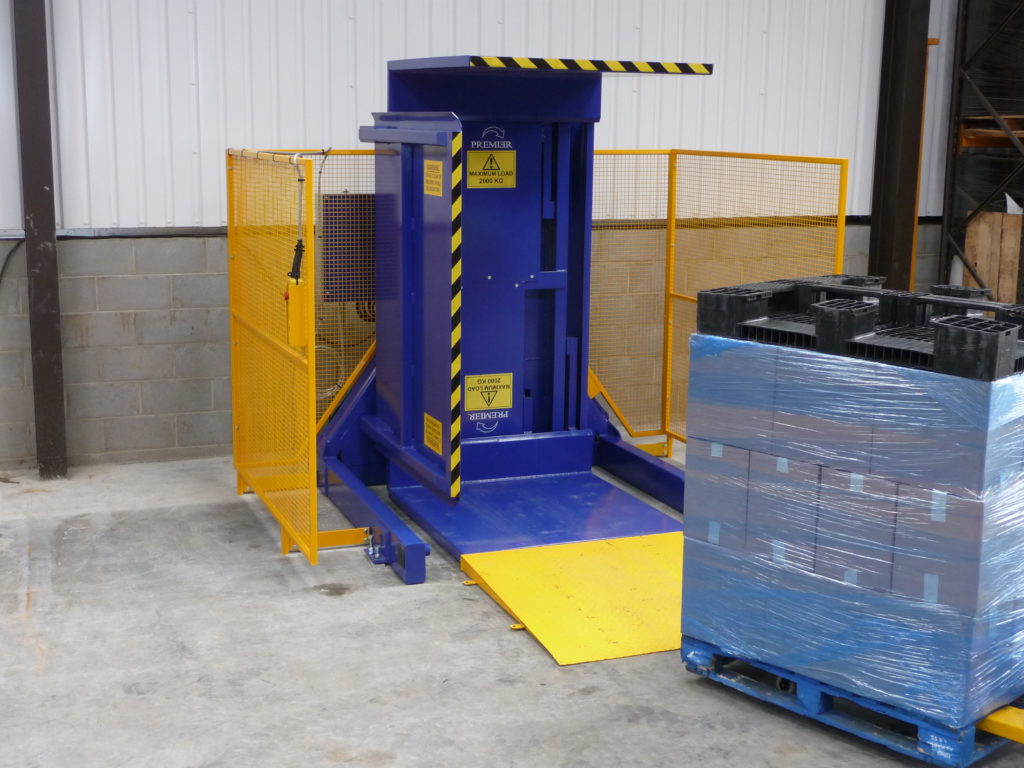
When I work with clients in the chemical industry, we create a checklist of non-negotiable features. This isn't just about buying a machine; it's about engineering a solution. For a detail-oriented leader focused on stability and ROI, these features are the foundation of a reliable process. Let's examine each one.
Intelligent Clamping and Rotation Systems
The heart of a safe chemical pallet inverter is how it handles the load. It must be both strong and gentle, a combination that requires smart engineering.
- Adjustable Clamping Pressure: A key feature is a hydraulic or electric clamping system with adjustable pressure controls. This allows operators to set the precise force needed for different container types—from heavy-duty steel drums to lighter plastic totes. Advanced systems use pressure sensors to apply just enough force to secure the load without creating a crushing risk. We often recommend equipping the clamping plates with soft, non-slip rubber or urethane pads to further protect the containers.
- Variable Speed Drive (VSD) for Rotation: Instead of a jarring, high-speed flip, a specialized inverter uses a VSD to control the motor. This enables a slow, smooth start, a controlled 180-degree rotation, and a gentle stop. This "soft start/soft stop" functionality is critical for liquid loads. It prevents the violent sloshing that can compromise container seals and destabilize the pallet.
Total Containment and Safety Architecture
This is what truly separates a specialized machine from a standard one. The entire design philosophy shifts from simply holding the load to completely enclosing it.
- Fully Enclosed Chamber: The inverter is built like a sealed box. When the pallet is loaded, steel doors close and lock, creating an isolated environment. This ensures that if a leak does occur, it is completely contained within the machine.
- Integrated Spill Sump: The floor of the enclosed chamber is designed as a sump or is equipped with a slide-out containment tray. This tray can hold a significant volume of liquid, often 110% of the largest container on the pallet, in line with many environmental regulations. It's typically made from corrosion-resistant material like stainless steel.
- Interlocking Safety Doors: The machine's control system is wired with safety interlocks on the access doors. The rotation cycle cannot begin unless the doors are fully closed and locked. Similarly, the doors cannot be opened until the rotation cycle is complete and the load is safely back in its upright position. This protects operators from any moving parts and potential chemical exposure.
Here’s how these features work together to create a safe system:
| Feature | Engineering Detail | Safety & Operational Benefit |
|---|---|---|
| Soft-Touch Clamping | Adjustable pressure sensors, rubber pads | Prevents container damage and product loss. |
| Variable Speed Control | VSD motor controller | Ensures load stability, prevents spills from sloshing. |
| Enclosed Chamber | Sealed steel construction | Contains 100% of any spills within the machine. |
| Spill Sump/Tray | Integrated, high-capacity reservoir | Captures leaked liquids for safe disposal, prevents floor contamination. |
| Safety Interlocks | Electronic sensors on all access doors | Prevents machine operation in an unsafe state, protecting personnel. |
Investing in a machine with these features is a direct investment in operational stability. It’s the kind of proactive risk management that leaders in demanding industries like steel manufacturing apply to their own critical processes.
How does a specialized pallet inverter improve operational efficiency and compliance?
Safety is the primary driver, but a strategic investment must also deliver a return. Leaders like Javier are constantly analyzing how new equipment can impact the bottom line, from increasing throughput to reducing operational costs. A common misconception is that safety-focused equipment slows down production. In reality, a well-designed specialized pallet inverter does the opposite.
A specialized pallet inverter directly improves operational efficiency by automating a slow and hazardous manual task, drastically reducing labor costs and eliminating downtime caused by spills or accidents. It ensures compliance by providing an engineered control that meets or exceeds government safety regulations for hazardous material handling, thereby avoiding costly fines and legal liabilities.
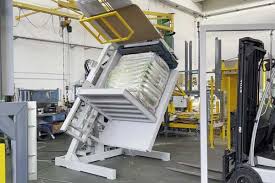
From my experience helping factories optimize their packaging lines, the efficiency gains are often surprising. The focus shifts from managing a risky process to overseeing a predictable, automated one. This has a direct impact on the key performance indicators that every plant manager and owner watches closely.
Achieving Higher Uptime and Lowering Labor Costs
Manual pallet exchange is a major bottleneck. It's slow, physically demanding, and requires multiple staff members. Automating this process provides immediate and measurable benefits.
- Increased Throughput: A manual swap of a pallet of chemical drums can take two or more workers 15-20 minutes, and that's if everything goes perfectly. A specialized pallet inverter can complete the same task with a single operator in under 2 minutes. This dramatic reduction in cycle time allows you to reallocate labor to more value-added tasks. For an operation focused on increasing产能利用率 (capacity utilization), removing this bottleneck is a significant win.
- Reduced Downtime: The biggest killer of uptime is unplanned stops. A chemical spill from a manual handling accident can shut down a line for hours, if not an entire shift. The cost of lost production often dwarfs the cost of the spilled product. The engineered containment of a specialized inverter virtually eliminates this risk, leading to more predictable and reliable operations. This directly supports the goal of achieving 95% effective run time.
Driving Down Operating Costs and Ensuring Compliance
This is where the investment truly pays for itself. The benefits extend beyond the production line and impact the overall financial health of the operation.
- Elimination of Product Loss: Every drop of spilled cleaner is lost revenue. A specialized inverter prevents the container damage that leads to these losses. Over the course of a year, this saved product adds up to a substantial amount.
- Lower Insurance and Liability Costs: A safer workplace with fewer injuries and incidents can lead to lower workers' compensation insurance premiums. More importantly, it protects the company from the massive financial and reputational damage of a serious accident or environmental violation. For a CEO, this risk mitigation is invaluable.
- Guaranteed Regulatory Compliance: Instead of relying on administrative controls (like training and procedures) to manage a hazardous task, you are implementing an engineered control. This is the highest level of safety protection recognized by bodies like OSHA. It provides a defensible, documented process that proves due to diligence in protecting your workers and the environment, helping you meet even the strictest 环保压力 (environmental pressures).
This table connects the machine's benefits directly to common business goals:
| Benefit of Specialized Inverter | Impact on Business Goals |
|---|---|
| Automated Cycle ( <2 mins) | Increases产能利用率 (Capacity Utilization), Lowers Labor Cost |
| Spill Containment System | Reduces Downtime, Prevents Product Loss, Lowers Cleanup Costs |
| Engineered Safety Controls | Ensures Environmental & Safety Compliance, Reduces Legal & Financial Risk |
| Gentle Handling | Improves Product Quality (no damaged goods), Lowers Operating Costs |
This is not just a machine. It's a tool for achieving key business objectives: higher efficiency, lower costs, and robust compliance. It transforms a high-risk operational challenge into a strategic advantage.
What are the key considerations when choosing a pallet inverter for chemicals?
You're convinced that a specialized machine is the right path. Now comes the critical task of selecting the right model and the right partner. The market offers various options, and making an informed decision is crucial to ensure the equipment meets your exact needs for years to come. For a decision-maker like Javier, who conducts rigorous feasibility analysis, a clear set of selection criteria is essential.
When choosing a pallet inverter for hazardous cleaners, the key considerations are material construction (like stainless steel for chemical resistance), load capacity and compatibility with your specific containers, the level of automation and integration with your existing workflow, and the reliability and support offered by the manufacturer.
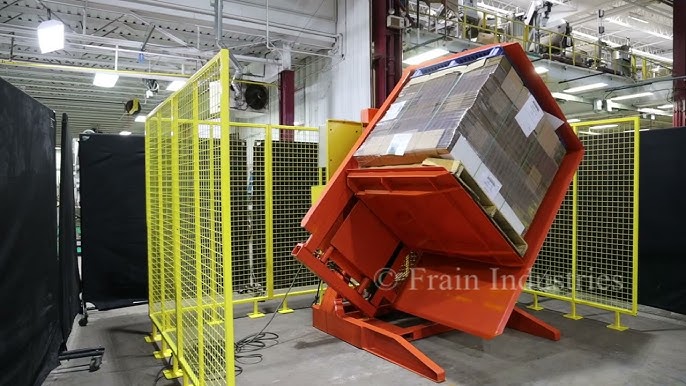
Over the years, I've developed a simple framework to guide my clients through this process. It’s about asking the right questions before you commit. This ensures there are no surprises after installation. I see the supplier-client relationship as a partnership, and that partnership begins with a thorough and honest technical evaluation.
Matching the Machine to Your Material and Load
The first step is to analyze what you are handling.
- Material Compatibility: What kind of hazardous cleaners are you working with? Are they corrosive? The machine's construction material is critical. For many chemicals, 304 or 316 stainless steel is the best choice. It resists corrosion, is easy to clean, and has a very long service life. For less aggressive materials, a powder-coated mild steel frame might be sufficient, but the spill sump should always be stainless steel.
- Load Specifications: You must know your numbers. What is the maximum weight of your heaviest pallet? What are your pallet dimensions (length, width, height)? What types of containers are you handling—55-gallon drums, plastic totes (IBCs), pails, or a mix? The machine's opening range, clamping surface, and weight capacity must be able to accommodate your largest and heaviest loads.
Integration, Automation, and a Forward-Looking View
A pallet inverter doesn't operate in a vacuum. It must fit seamlessly into your production flow.
- Level of Automation: Do you need a standalone, forklift-loaded machine, or one that is fully integrated into a conveyor line? A standalone model offers flexibility, while an integrated system maximizes throughput for high-volume operations. This is a key part of the 推进数字化转型 (promoting digital transformation) strategy.
- Control System: The machine's PLC (Programmable Logic Controller) should be user-friendly and reliable. Can it be connected to your plant's MES (Manufacturing Execution System) or SCADA system? This allows for data collection on cycle times and machine status, which is essential for predictive maintenance and achieving the goal of 全面生产可视化 (comprehensive production visualization).
- Future Needs: Don't just buy for today. Think about your business in five years. Are you planning to introduce new products or packaging types? Choose a machine with some flexibility in its specifications to accommodate future growth.
The Supplier as a Strategic Partner
This is perhaps the most important consideration. As Javier knows, a supplier is more than just a vendor; they are a partner in your success.
- Expertise and Consultation: Does the supplier understand your industry and your specific challenges? They should act as consultants, helping you select the right features and configuration.
- Support and Service: What kind of after-sales support do they offer? This includes installation, training for your operators and maintenance staff, and the availability of spare parts. A strong partner provides a "total solution," not just a piece of equipment.
- Proven Track Record: Ask for case studies or references from companies in the chemical or hazardous materials industry. A history of successful installations is the best indicator of a reliable partner.
Making the right choice is about a careful balance of technical specifications, operational needs, and a strong supplier relationship.
My Insights
I remember a client a few years ago who ran a chemical distribution center. They were handling drums of industrial solvents and were manually transferring them from wooden pallets to plastic ones for cleanroom compliance. It was slow, back-breaking work, and they had two near-misses with spills in one quarter. The plant manager was under immense pressure. He knew he had a problem, but he saw a specialized pallet inverter as a huge capital expense that would be hard to justify.
We sat down, not in his office, but right there on the factory floor. We watched his team work. We timed the process. We talked about the physical strain on his people. I didn't start by showing him a machine. I started by helping him calculate the real cost of his current method. We factored in the labor hours, the risk of a spill cleanup, potential fines, and the constant worry that kept him up at night.
When we looked at the numbers, the "expensive" pallet inverter no longer looked like a cost. It looked like an investment in stability. We configured a stainless steel, fully enclosed machine with adjustable clamping for his specific drum sizes. Six months after installation, he called me. He said his throughput in that area had doubled, and his team felt safer. The fear of a major incident was gone. For him, that peace of mind was the biggest return on investment.
This story sticks with me because it gets to the heart of what we do. For a leader like Javier Morales in Mexico, who is running a complex steel mill and thinking about long-term strategy, equipment is not just metal and motors. It is a solution to a problem. It’s a way to reduce risk, increase efficiency, and build a more resilient business.
Investing in a specialized pallet inverter for hazardous cleaners is not an operational expense. It is a strategic decision. It’s about fundamentally changing a process from a point of weakness to a point of strength. It is an investment in your people’s safety, in the integrity of your product, and in the long-term health and profitability of your entire operation. This is the perspective I gained from my journey from an employee to a factory owner, and it's the knowledge I am passionate about sharing.
Conclusion
Investing in the right pallet inverter for hazardous cleaners protects your people, your product, and your profits. It is a cornerstone of a safe and efficient operation.





